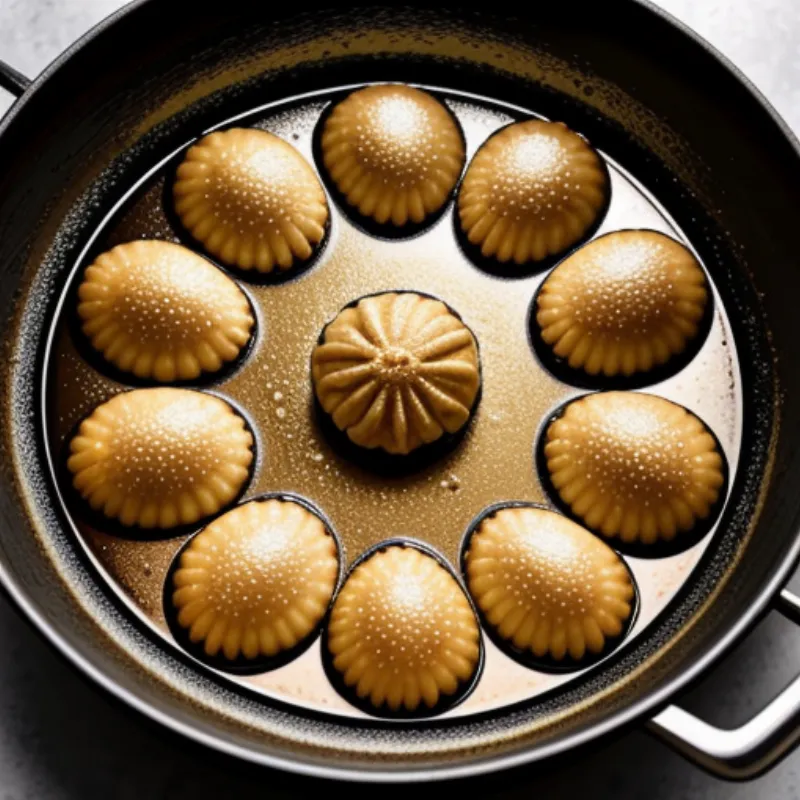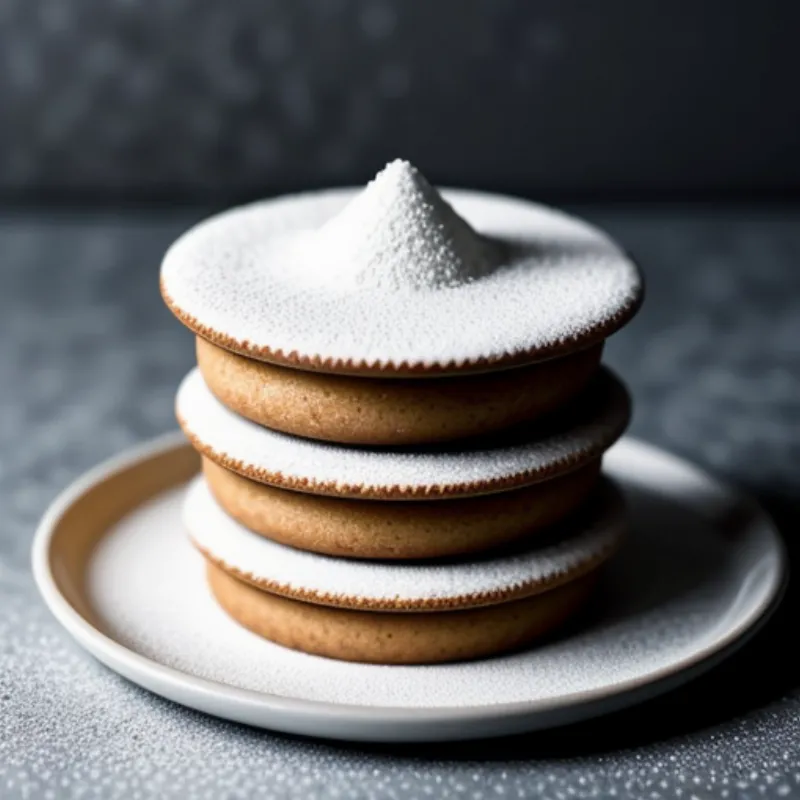Kroštule, also known as angel wings, are a beloved treat in many cultures. These crispy, delicate pastries are made from a simple dough that is fried to golden perfection and dusted with powdered sugar. The beauty of kroštule lies in their simplicity – they are surprisingly easy to make at home, and the results are simply irresistible. Whether you’re looking for a festive treat for a special occasion or a comforting dessert for a cozy night in, this recipe will guide you through each step, ensuring your kroštule turn out light, airy, and utterly delicious.
Gathering Your Ingredients
The magic of kroštule starts with a few basic ingredients you probably already have in your pantry. Here’s what you’ll need:
- 3 cups all-purpose flour (plus extra for dusting)
- 1/4 cup granulated sugar
- 1/4 teaspoon salt
- 3 large eggs
- 1/4 cup milk
- 2 tablespoons of rum or brandy (optional, but adds flavor)
- 1 teaspoon vanilla extract
- Vegetable oil, for frying
- Powdered sugar, for dusting
Tips for Ingredient Substitutions:
- Gluten-Free: While traditional kroštule use all-purpose flour, you can experiment with gluten-free flour blends. Be aware that the texture may vary slightly.
- Dairy-Free: If you prefer a dairy-free version, you can substitute the milk with unsweetened almond milk or soy milk.
Essential Tools for Kroštule Success
Before you begin, gather these tools to make the process even smoother:
- Rolling pin
- Sharp knife or pastry cutter
- Slotted spoon or spider strainer
- Paper towels
- Large plate or baking sheet
Let’s Make Kroštule!
Now for the fun part—transforming these simple ingredients into crispy, golden kroštule:
Step 1: Creating the Dough
- In a large bowl, whisk together the flour, sugar, and salt.
- Create a well in the center of the dry ingredients.
- In a separate bowl, whisk together the eggs, milk, rum or brandy (if using), and vanilla extract.
- Pour the wet ingredients into the well in the dry ingredients.
- Using a fork, gradually incorporate the dry ingredients into the wet ingredients until a dough starts to form.
- Turn the dough out onto a lightly floured surface and knead for 5-7 minutes, until smooth and elastic. If the dough seems too sticky, add a little more flour, a tablespoon at a time.
- Form the dough into a ball, cover it with plastic wrap, and let it rest for at least 30 minutes. This resting period allows the gluten to relax, making the dough easier to roll out.
Step 2: Shaping the Kroštule
- Divide the dough into four equal portions. Work with one portion at a time, keeping the rest covered.
- On a lightly floured surface, roll out each dough portion into a thin rectangle, about 1/8-inch thick. If the dough springs back when rolling, let it rest for a few more minutes.
- Using a sharp knife or a pastry cutter, cut the dough into strips, about 1-inch wide and 4-5 inches long.
Step 3: The Artful Twist
- Make a small cut in the center of each strip.
- Gently pull one end of the strip through the cut to create a twist. This step adds to the distinctive look of the kroštule.
Step 4: Frying to Golden Perfection
- In a large, heavy-bottomed pot or Dutch oven, heat about 2 inches of vegetable oil over medium heat to 350°F (175°C). A candy thermometer comes in handy here!
- Carefully lower a few kroštule strips into the hot oil, making sure not to overcrowd the pot.
- Fry for 1-2 minutes on each side, until they turn a beautiful golden brown.
- Remove the fried kroštule using a slotted spoon or spider strainer and place them on a plate lined with paper towels to drain excess oil.
Step 5: The Finishing Touch
- While the kroštule are still warm, generously dust them with powdered sugar.
 Kroštule Frying
Kroštule Frying
Tips for Kroštule Triumph
- Testing Your Oil: To check if your oil is hot enough, drop a small piece of dough into the oil. If it sizzles and floats to the surface, you’re good to go!
- Controlling Oil Temperature: Adjust the heat as needed to maintain the oil temperature around 350°F (175°C). If the oil is too hot, the kroštule will brown too quickly and might not cook evenly.
- Draining Excess Oil: Placing the fried kroštule on paper towels helps absorb any excess oil, keeping them light and crispy.
Serving and Enjoying Your Masterpiece
Kroštule are best enjoyed immediately after frying while they are still warm and crispy. They are delightful on their own or with a dollop of whipped cream, a sprinkle of cinnamon sugar, or a side of fruit preserves.
 Plate of Kroštule
Plate of Kroštule
Frequently Asked Questions
Q: Can I make the kroštule dough ahead of time?
A: Absolutely! You can make the dough a few hours ahead of time. After kneading, wrap it tightly in plastic wrap and store it in the refrigerator until you’re ready to roll and fry.
Q: How should I store leftover kroštule?
A: While they are best enjoyed fresh, you can store any leftovers in an airtight container at room temperature for a day or two. They might lose a bit of their crispness, but you can always reheat them in a low oven (around 300°F/150°C) for a few minutes to crisp them up.
Q: My kroštule turned out a bit tough. What could be the reason?
A: The most likely reason for tough kroštule is over-kneading the dough. Knead the dough until it’s smooth and elastic, but avoid overdoing it.
A Final Word from Our Kitchen to Yours
Making kroštule is a wonderful way to share a taste of tradition and create sweet memories in your own kitchen. So gather your ingredients, put on your apron, and experience the joy of making these delightful treats from scratch. Happy baking!
